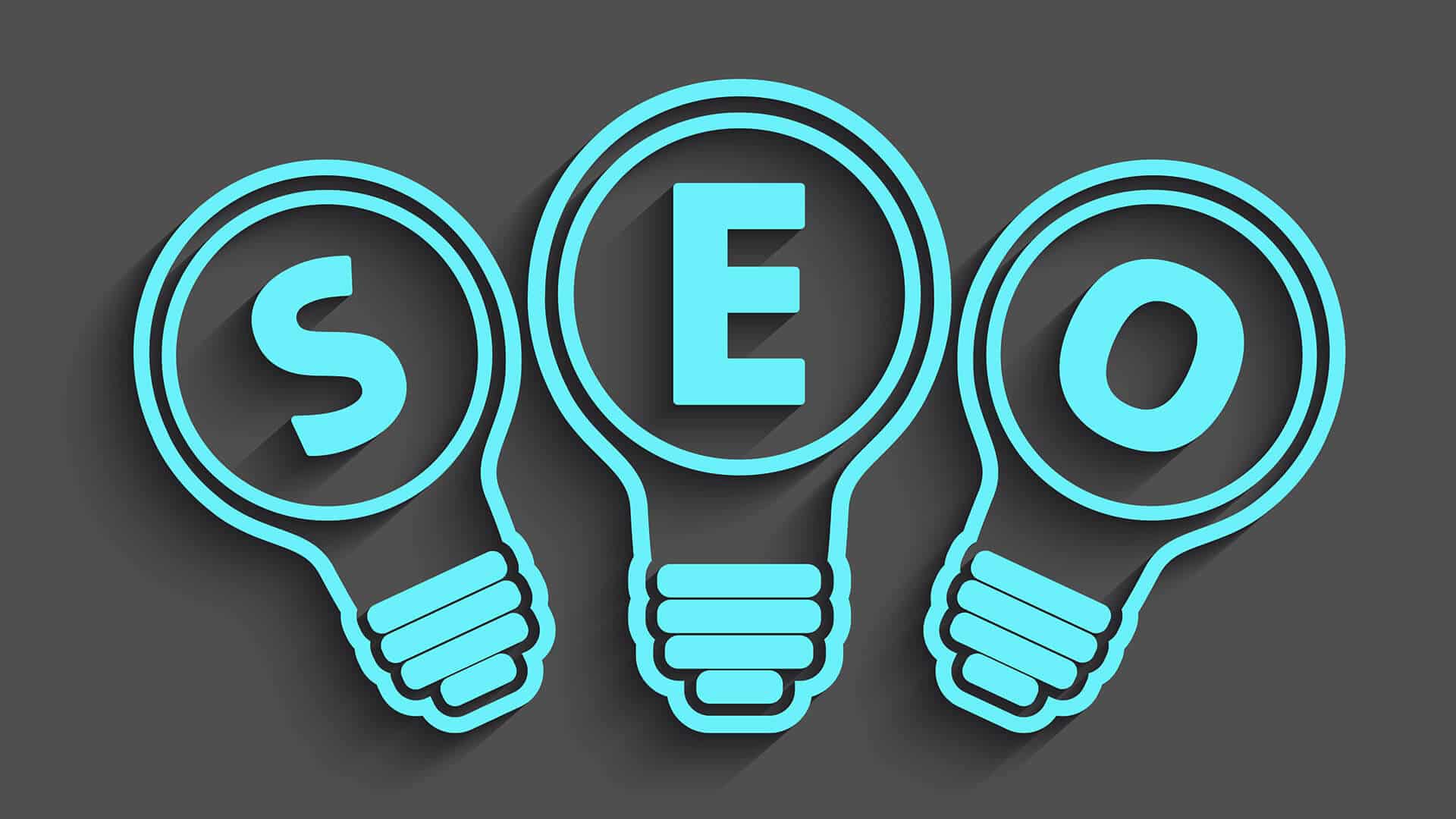The following content is not written by REG, it has been selected because of its accuracy and thoroughness.
Source: JENNIFER YESBECK – Jennifer is Marketing Manager at Alexa. With a knack for syntax and passion for building connections, she drives daily content strategy to bring you the latest and greatest happenings within Alexa and the wide world of web analytics and marketing. Link to site.

Search optimization is an essential marketing strategy for brands trying to attract attention, drive website traffic, and grow their business. But search optimization can be a difficult strategy to manage if you don’t know how to compare SEM vs. SEO.
The tactics may sound the same, but they are two very different approaches to search optimization. If you use the terms SEM and SEO interchangeably and don’t know the differences between the two, you won’t be able to communicate a clear and effective strategy for improving your visibility in search.
This post will give you a clear understanding of the definition and value of each. It will help you answer the following questions:
- • What is search marketing?
- • What is SEM?
- • What is SEO?
- • What is the difference between SEM and SEO?
- • Which is better for my brand?
You’ll also discover SEO and SEM basics and strategies that will help you improve your visibility and performance in search. Take a look at our SEO vs. SEM infographic to help you visualize the differences between the two.
What is Search Marketing?
Before you can create a strategic search optimization strategy, you need to understand the terminology for this type of marketing. So let’s start at the top.
Search marketing relates to any tactic that helps a brand get attention by appearing on search engine results pages (SERPs) . It includes efforts to get higher rankings and increase search visibility so you can drive more traffic to a website or specific webpages.
There are two major categories within search marketing:
- • SEM, which uses PAID strategies to appear in search
- • SEO, which uses ORGANIC strategies to appear in search
The main difference between SEM vs. SEO is that SEM is a paid strategy and SEO is an organic strategy.
Like most things in the search industry, the definitions related to search marketing have evolved. Some marketers may consider SEM to be an umbrella term that includes both paid and organic strategies. But to make your marketing plan clear, we recommend breaking the terms into these distinct categories.
Because these terms can be interchangeable and mean different things to different marketers, always clarify the terminology before working with search partners. Discuss the definitions with your marketing partners to ensure that you are approaching the strategy with the same understanding.
What is SEM?
SEM, or search engine marketing, is often considered the part of search marketing that uses PAID tactics to gain visibility in SERPs. A paid SEM strategy includes both the activities involved with setting up and optimizing ads as well as setting a budget that pays for the placement of ads.
This strategy is often referred to as paid search or pay-per-click (PPC) marketing.
Google Ads (formerly Google Adwords) is the search provider most commonly used for this strategy. With this tactic, brands conduct keyword research and create campaigns that target the best keywords for their industry, products, or services. When users search for those keywords, they see the custom ads at the top or bottom of SERPs. The brand is charged each time a user clicks on the ad.
For more SEM tips and basic strategies, check out our post on PPC lead generation.
What is SEO?
SEO, or search engine optimization, is the part of search marketing that uses ORGANIC tactics to gain visibility in SERPs. With SEO, brands don’t pay for placement on SERPs. Instead, they use a variety of tactics that prompt search engines to show their content near the top of SERPs because the result is valuable and authoritative.
SEO includes hundreds of tactics that can help a brand increase their search rankings. These white hat SEO techniques are often grouped into three categories.
- • On-page SEO optimizes each individual page of a website to target a specific keyword and appeal to search engines. These strategies include: keyword research, content creation, and keyword optimization. On-page optimization in SEO helps search engines understand a page of content and, therefore, give it higher ranks.
- • Technical SEO optimizes the non-content elements of a website and the website as a whole to improve its backend structure and foundation. These strategies relate to: site speed, mobile friendliness, indexing, crawlability, site architecture, structured data, and security. Technical SEO improves both user and search crawler experience, which leads to higher search rankings.
- • Off-page SEO builds a website’s reputation and authority by connecting it to other high-quality websites. Off-page SEO techniques include: link building (acquiring high-quality backlinks) from other websites and managing local listings and directory profiles. When many websites link to a brand’s website, it shows search engines that the brand’s website is trustworthy, reliable, and reputable, which increases its search rankings.
Related: How do search engines work?
A strong SEO plan doesn’t focus on just one of these three types of SEO but instead combines all three strategies to produce the best results.
SEM vs. SEO: What’s the Difference?
SEM and SEO are unique elements of search marketing. But when you compare SEM vs. SEO, you’ll find that they have both similarities that overlap and differences that separate them.
SEM vs. SEO: The Similarities
Both help a brand appear in search results. One of the SEO and SEM basics is that they both aim to help a brand appear in prominent positions on SERPs. The goal of each tactic is to help a brand show up in search results when users search for specific terms related to the brand’s industry, business, or offerings.
Both are designed to drive more traffic to a website. The goal of both is to gain visibility on SERPs, but more importantly, to drive traffic to a website. Each strategy employs tactics to increase click-through-rates (CTR) and get more users to click on the search results.
Both require knowing your audience. To succeed at both strategies, you must have a good understanding of your audience and how they act. By using buyer personas and psychographic segmentation, you can get to know your audience, discover what their needs are, and what they are searching for. Then you can create valuable content that shows up when they go looking for solutions related to your brand.
Both use keyword research to uncover popular search terms. The first step for both SEM and SEO is performing keyword research to identify the best keywords to target. The research includes looking at keyword popularity to determine the top keywords or buying keywords that your ideal audience searches for. It also includes looking at keyword competition to see what other brands are targeting the same keywords and determining what you will need to do to compete with those other companies.
To conduct keyword research, start with Alexa’s Keyword Difficulty Tool. Enter a search term related to your industry, business, products, or services and view a list of related search terms along with scores on their popularity and competition.
Both target specific keywords. Both strategies focus on targeting specific keywords that are identified during keyword research. At the core of each tactic are keywords.
Both require testing and continual optimization. When comparing SEM vs. SEO, you should know that neither is a strategy that you can set and forget. Both require continual testing, monitoring, and optimization to increase performance.
SEM vs. SEO: The Differences
SEM search placements include an “Ad” designation. SEO does not. Search results that appear as a result of SEM or SEO look different on SERPs. Paid ads that receive placement through SEM tactics are often identified as an ad (e.g., by an icon appearing next to the placement), whereas the search results that appear as a result of organic SEO are not marked in such manner.
Google and the Google logo are registered trademarks of Google LLC, used with permission.
SEM search results have ad extensions. SEO search results have featured snippets. When comparing SEM vs. SEO, you’ll also find differences in the appearance of the search results. SEM search results may include ad extensions, which can add on additional links, phone numbers, and callouts. On the other hand, SEO results may appear with featured snippets in search.
Google and the Google logo are registered trademarks of Google LLC, used with permission.
You pay each time a user clicks on an SEM result. You pay nothing when a user clicks on an SEO result. SEM results are paid placements, and your brand is charged each time a user clicks on the result. Therefore, you must have a budget for continually showing SEM ads and using this form of PPC lead generation. On the flip side, you are never charged when a user clicks on an organic search result.
SEM results show to a select target audience. SEO results do not. While successful SEO and SEM strategies are driven by a plan to connect with a select audience, you can only specify that target audience through SEM. Through SEM, you can (depending on the publisher) select what audiences you want to see the search results by assigning filters based on age, location, income, habits, and more. Through SEO, you cannot specifically choose who will see your search results.
The impact of SEM is immediate. SEO takes time. Through paid SEM ads, you can start to put your results in front of audiences with just a few clicks. As soon as you launch a campaign, your ads start showing in SERPs. At any time, you can turn ads on to increase visibility or turn them off to stop showing. Conversely, SEO is something that you acquire over time and typically over a long time. It can take months of implementing an SEO strategy before a brand begins to rank on search engines.
SEM is better for testing than SEO. Because you can immediately turn SEM paid ads off and on, it’s a great strategy for testing. You can quickly revise your ad copy, target new audiences, and change landing page content to test your new tactics. This flexibility allows you to see differences in your strategies immediately. You cannot accomplish this through SEO, as it would take too much time to make changes and monitor differences in results.
SEO adds value over time. SEM does not. SEM is only active as long as you pay for your results to show. As soon as you turn off your ads, your SEM strategy is over. SEO is the opposite. SEO strategy grows and compounds over time and leaves lasting results.
SEO has a higher click-through rate (CTR) than SEM … if you can get to the top. The first few organic search results typically have the highest CTRs. So if you can get to the top, you can likely outperform SEM ads. But if you appear on the second page of results or lower, you can probably get more clicks through SEM.
SEM vs. SEO: Which is Better?
Now that you have compared SEM vs. SEO, it will be easier to decide which tactic is right for your marketing strategies. To decide which is right for your brand, use what you know and consider the following.
Consider your competition. Look at what your competitors are doing and how they are performing in their search marketing before you decide how you can best compete with them. Research what search terms they rank organically for. Consider if you can execute a plan to top their SERP placements. Also, look at what paid terms they are using to drive traffic to their own sites. As you perform this research, look for gaps that you can fill and areas where you will be unable to compete in both paid and organic search.
This competitive analysis template can help you get a complete look at how you stack up to the competition in search and uncover opportunities for growth.
To get a good look at the keyword strategy of your competitors, use Alexa’s Competitive Keyword Matrix. Enter up to 10 of your competitors to review both the top organic and paid search terms that are driving the most traffic to their sites.
Consider how well you know your industry. If you have been in business for a while and already know what your customers want and how to best reach them, you may want to start to build a long-term SEO strategy that will provide value over time. If you aren’t sure how customers and competitors will respond to your offerings or content, you may want to consider an SEM campaign that allows you to test your ideas, products, and services. Use these sites for market research to better understand your target audience and your position in the industry.
Consider the length of your typical customer buying cycle. If your products and services have a short customer buying cycle, meaning your customers know what they want, search for it, and buy it, you may benefit from SEM ads that put your product right where customers will see it. Longer buying cycles, where customers research and compare for weeks or months, may not perform as well with SEM, as there isn’t an immediate buy after seeing one ad.
Consider the average cost-per-click in your industry. Before deciding that SEM is right for your business, research and consider how much you’ll need to spend to show in paid search results. Keywords have varying cost-per-clicks based on competition. If your cost-per-click is low, it might be the right strategy for you. On the flipside, a very high cost-per-click might make you decide you’re better off focusing on SEO.
Consider the age of your business. If you just opened your business and launched your website, it’s going to take time to develop your SEO and begin to appear organically in the search. While that doesn’t mean you shouldn’t put together an SEO strategy, it does mean that you could benefit from an SEM strategy until you build your SEO. SEM is an effective way to drive traffic while building organic SEO.
Consider the current status of your website. When you create a marketing strategy, look for the “low-hanging fruit”, or the opportunities that will make the biggest impact with the least amount of work. So before you launch a search marketing campaign, research your website to see where you may have the potential to grow an organic SEO strategy that is already working before putting money into an SEM campaign.
The Ripple Effect Group, in Rocky Hill, Connecticut, can help you figure out a marketing budget that fits both your budget and your aspirations! Let’s start the conversation today! Email us at help@therippleeffectgroup.com or give us a call at 959-200-4252.




